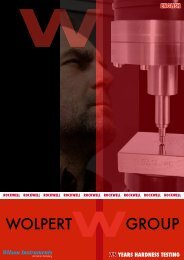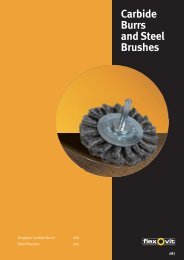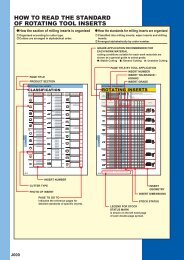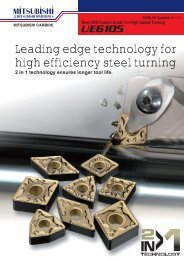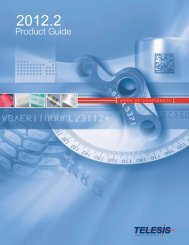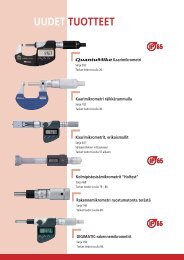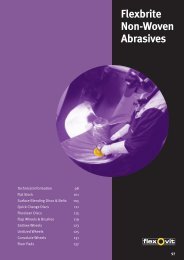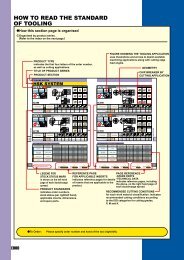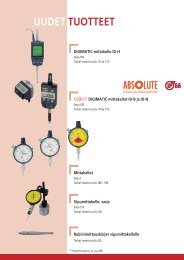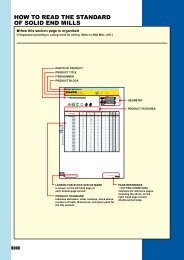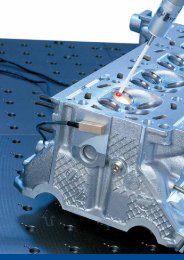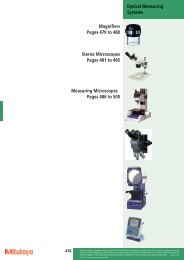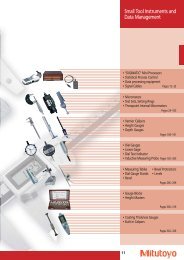Coated Abrasives
Coated Abrasives
Coated Abrasives
- No tags were found...
Create successful ePaper yourself
Turn your PDF publications into a flip-book with our unique Google optimized e-Paper software.
Contact Wheels<strong>Coated</strong><strong>Abrasives</strong>Many machines use contact wheels as a backing for belts. Contact wheels are generally coveredwith rubber, polyurethane, steel, rubber foam, felt, or compressed canvas, and are classified fromsoft to hard, with or without serrations. Using a different type of contact wheel has a direct effecton the end results.• Harder contact wheels provide a higher cut rate, a rougher surface finish and generate a muchmore uniform surface than softer contact wheels. They are used with stiff belts for a faster cut• Softer contact wheels provide lower cut rates, a better surface finish and follow the contoursof the part. They are generally used for finishing contoured parts or for generating slightlyrounded surfaces. They are much less hard wearing on the belt and its joint.The design of the contact wheel will also have an effect on the contact area, which in turn affectsgrinding pressure.• Contact wheels with a larger diameter act softer and should generally be used on larger surfaces• Serrated contact wheels act harder but should generally be used on smaller surfacesCONTACT WHEEL TYPESHard SoftAggressiveness increases as angle increasesLS90 o 45 o 15 oContact surface decreases as lands decrease giving a more aggressive, harder wheel.S=LLS90 o 45 o 15 oJointsBelts are made with a standard joint design best adapted to the product and itsmain application:JOINT TYPESbutt joint with tapeoverlap joint withno topskiveoverlap joint withextra topskive71



